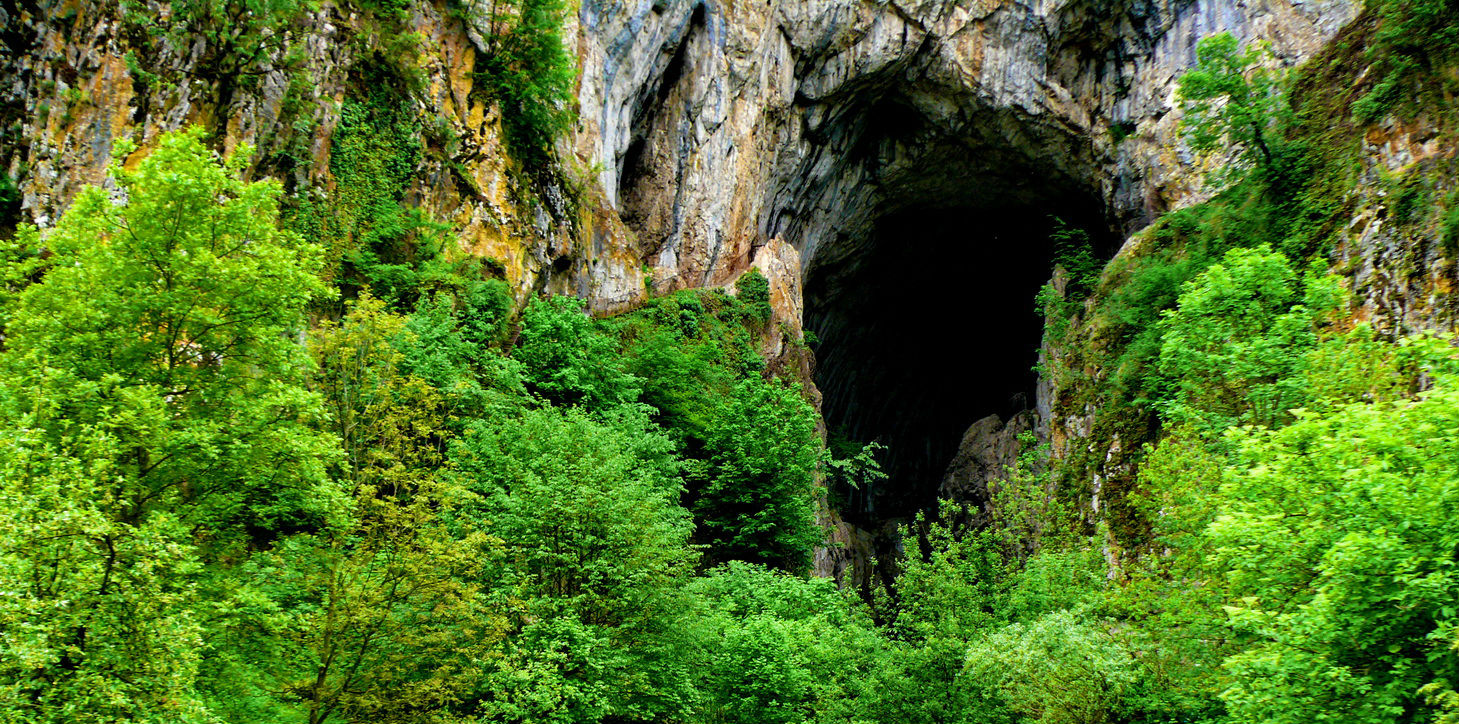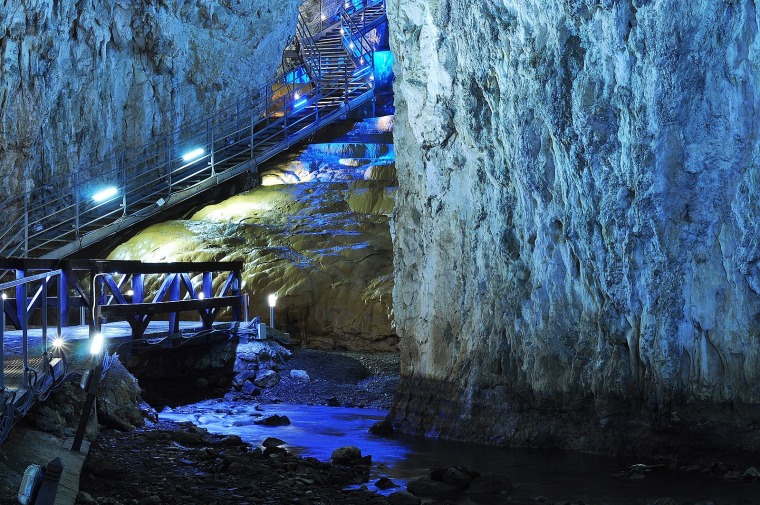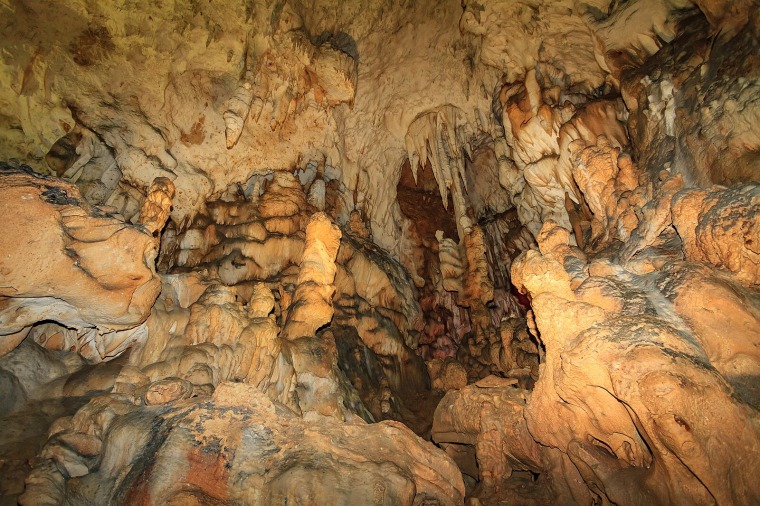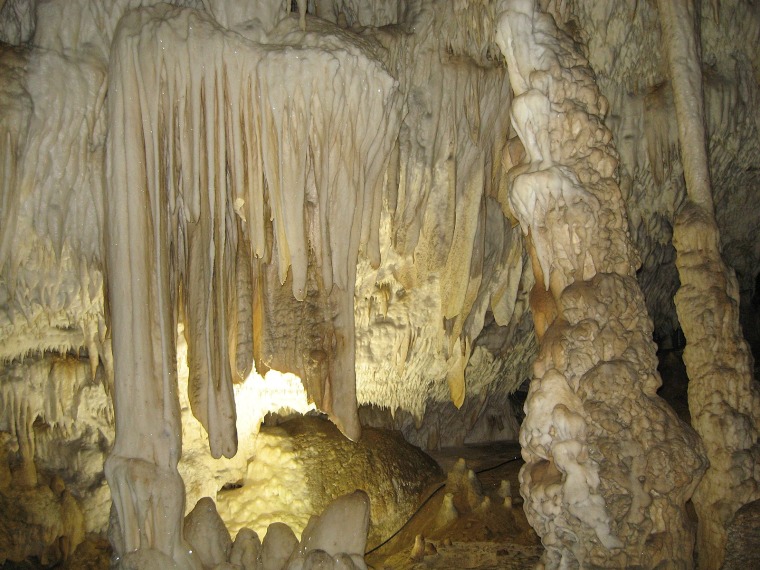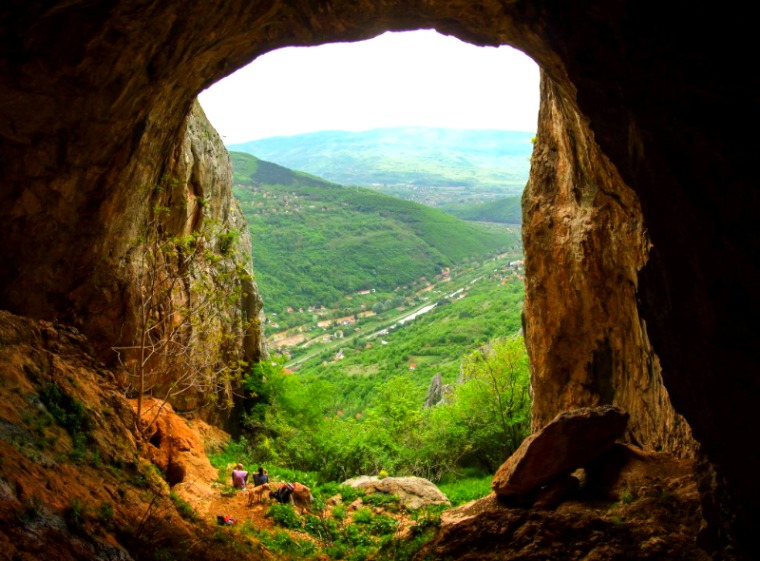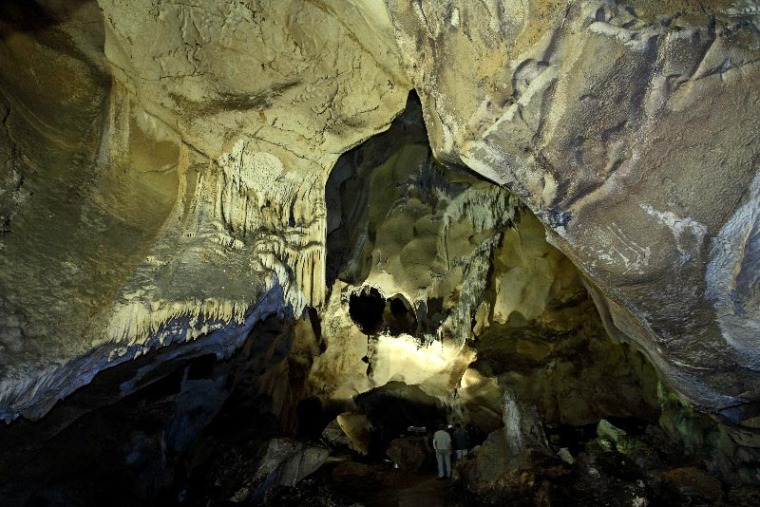The Risovača cave, a museum of Paleolithic culture, was inhabited by the early man of the Neanderthal type, and some fossils of animals that walked the Earth during the last ice age were also found in it.
Well known underground museum of the Paleolithic time and the only confirmed habitat of the prehistoric people, the Risovača cave near the city of Arandjelovac reveals its hidden secrets to curious visitors. Numerous fossil remains of ancient animals that once lived in the steppe of today’s Risovača hill were found in this cave.
Visitors are welcomed by the life-sized reconstruction of a Neanderthal family that had lived in this cave.
Scientist believe that even Homo sapiens once inhabited the Risovača cave. The figures of the family gathered around fire are seized in the moment occupied with their every day activities, indicating that Neanderthals were intelligent early men who handmade tools necessary for every day life.
The cave was discovered over 60 years ago simply by chance, when 20 meters of the entrance to the cave collapsed revealing till than yet unknown cave. Than it was declared the Archaeological Site of Great Importance and three decades later it became a monument of nature. The cave is 135 meters long and including the side halls it is almost 190 meters long.
Risovača is the best researched cave in Serbia, and the scientists believe that it is one of only five caves in the Balkans that had been inhabited by the Neanderthals. Artifacts such as leaf-shaped knives, spike, dagger made of bone and polisher were found in the cave proving the presence of cave men in this region.
The preserved artifacts made of stone (a spike, an ax a scraper for working with animal skin and fur, a chisel) and bone (a fastener for leather clothing, an awl and a dagger) were made by early men of Neanderthal type who were primary hunters and intelligent creatures who made tools with a specific purpose.
During years of research numerous ice-age animal bones have been discovered – the cave bear, cave lion and cave hyena, wild horse, wild ox, giant deer, woolly rhinoceros, mammoth,bison, as well as numerous stone and bone tools suggesting that this is the archaeological site from the Paleolithic Age.

The age of these remains was estimated at around 36,000 years, give or take 6,000 years, suggesting that it was the age of the last Neanderthal man walking on this land.
Another unique characteristic of the Risovača cave is the presence of the semiprecious onyx stone that had been formed by mineral waters that once had flown through this cave, known today as the “Knjaz Miloš” mineral water.
Some 110 thousand years ago, when they have created the Risovača cave, these waters were cold, followed later by warm waters that had created deposits, and the resulting physical and chemical processes had created the marble onyx. Aragonite, a stone rarely seen in the nature, is also found in the cave. Its characteristic is that it groups crystals contrary to the force of gravity.
In 2009 the decorative lights were installed in the Risovača cave, and for the purpose of education the calcification machine was installed to show the process of how cave ornaments are made – stalactites and stalagmites, even though this cave doesn’t have them in abundance, they are only seen at several places.
The last zone of the cave hides two niches – Coral or Snowy room with the ornaments that look like snowy corals, and the second niche that is named after archaeology student Vesna Bogdanović, who used to work on the explorations of the cave.
The Risovača cave is home to one species of bat – Horseshoe bats, an endangered species protected by law as all others species of bats in Europe.
Cave ornaments, stalactites and stalagmites, corals, all in different shades from snow white to reddish and brown, and interesting forms created by erosion enrich the general beauty of this cave system.
How to get to the Risovača cave?
The cave is located near the entrance to the city of Arandjelovac from the direction of Topola. If you are heading there from the direction of Belgrade, you should take the highway through Mladenovac and Topola after 76 of which you will reach this one of a kind cave from the time of the Paleolithic man.
The daily buses from Belgrade to Arandjelovac are frequent, and there are also buses from the other major cities in Serbia.
When you are already there, don’t miss…
The museum which has many archaeological, ethnological and art artifacts, that is, exhibits of the culture which has been developing in this area of Šumadija.
Don’t miss the cultural and historical landmarks not far from the Risovača cave: “Karadjordjev grad” (Karadjordje’s city) in Topola, the church on Oplenac, but also don’t miss having a glass of wine from the royal vineyards, because when you are here, it is important to know that you are visiting one of the nine Serbian wine routes.
Don’t miss having a sip of the mineral water from the natural spring in Bukovička banja (eng. Bukovička spa) in Arandjelovac, as a well as a walk on Bukulja mountain, which will show you its greatest charm on May the 1st (May Day) and Labor day picnic.
The art manifestation “Marble and sounds” is organized annually in early July in honor of the marble from Mt. Venčac rising above Arandjelovac, a mountain rich with white marble from which a part of the White House in Washington was made of.
One of the most important dates in Serbian history has been celebrated with a manifestation each year in Orašac next to Arandjelovac. The date is the 15th of February, and it marks the day the agreement about organizing the First Serbian Uprising was reached and it is also the statehood of the republic of Serbia.
Related Articles
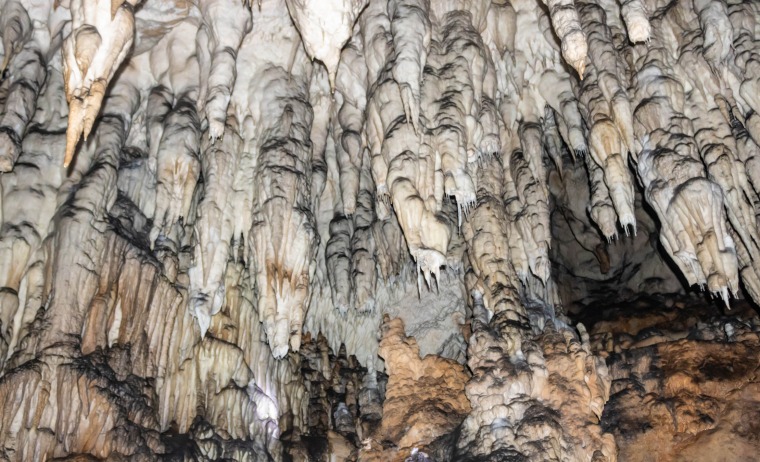
Ledenа Pećina in Uvac: Serbia’s Frozen Jewel
October 22, 2024




